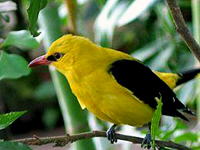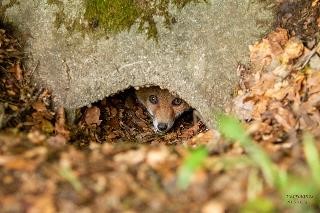A Mátra – Kékestető csúcsával – az ország legmagasabb pontja, zárt erdőterületekkel. Gyógyüdülőhelyi klíma, kedvelt kirándulóhely, a téli sportok paradicsoma, ugyanakkor megőrzendő tájképi egység, geológiai, botanikai és kultúrtörténeti értékekkel.

A természeti táj megőrzésére létesült 1985-ben a Mátrai Tájvédelmi körzet mintegy 12000ha területen. A Tájvédelmi Körzet védetté nyilvánítását a földtani értékek, a táj jellegét maghatározó földfelszíni formák, a felszíni vizek, a védett növény- és állatfajok, a természetes növénytársulások, a természetszerű erdők megóvása és fenntartása, valamint az ember felüdülését szolgáló kedvező természeti környezet fenntartása indokolta.Az erdős tájban a Mátra fő gerincének két oldalán, füzérszerűen helyezkednek el a hegység települései. Természetvédelmi és tájvédelmi szempontból meghatározó a Gyöngyös – Parád összekötő főút és az erről leágazó kékesi és galyatetői közút, illetve a mellettük elhelyezkedő üdülőkörzetek, övezetek.
A természetvédelmi kezelés célkitűzése úgy irányítani a társadalmi tevékenységet, hogy a művi és természeti környezet összhangban maradjon. Egymás melletti érvényesülésük fejleszthető legyen, kölcsönösen biztosítva mindkét terület regenerálódási lehetőségét. Kiemelt feladatok közé tartozik a fokozottan védett fajok élőhely védelmi programja, valamint újabb fajok, fajcsoportok gyakorlati védelmének elindítása, vizes élőhelyek, illetve a hegyi rétek rehabilitációja. Bízunk abban, hogy a Mátra hegység minél többet megőriz táji és természeti értékeiből.

Nature Conservation

The nature conservation in hungary began with the protection of certain bird and mammal species and in that respect it has internationaly considerable results, too. Today we can caunt 516 protected plant species, among them there are 52 strictly protected, and the number of protected animal species is 855 with 84 strictly protected species. The next important step in he development of nature conservation was the protection of habitats bylaw. The state level nature conservation is executed by 9 national park directorates covering the whole territory of the country.
The Mátra Protected Landscape Area was declared in 1985 for the conservation of the natural landscape on 12000 hectares. It covers the smaller western part and the larger eastern villages with their disturbed environment werw nat included. The smaller part is Ágasvár and valuable side of Mátrabérc, the larger black is the Kékes with the East-Mátra is rich in natural values.
The Mátra is part of the North-Hungarian Mountains and belongs the largest European zone of young volcanism. It’s development started in he Miocene (13-19 million years ago) in he active period of Myocene volcanism. The climate of the mountains determined by the geographical position and topography, significantly differs from the country. As a results of the relatively high elevations (400-900m) the climate is moderate and hilly.
The land is wooded with great variety of forest associations. The most typical forest associations are the turkey and sessile oaks. The Turkey-oak and sessile oak forest are changed by homebeam-oak at 550m on the northern side and at 650m on the southern. The beech covers the higher places. Higher than 900m the mountain beech is the typical (northern slopes of Kékes, Galyatető and Piszkéstető). The diversified habitats have diversified wildlife from which both the arthropodas of streams, both the colourful butterflies or the birds are worth mentioning. But the visitors can not easy to cath sight the rare, protected animals in the mountain, because they stay in the undisturbed places.
The small nature conservation area belongs to the protected landscape area:
Sár-Hill near Gyöngyös (186ha). It’s main value is the richness in botany. A small plateau with the Lake St. Anna and with open grass give habitat for several rare butterflies.
Lake Nyírjes (birch) near Sirok (23ha). The ranger service controlls the keeping the nature conservation regulations on the field, if necessary the use their right to five.
